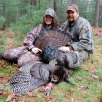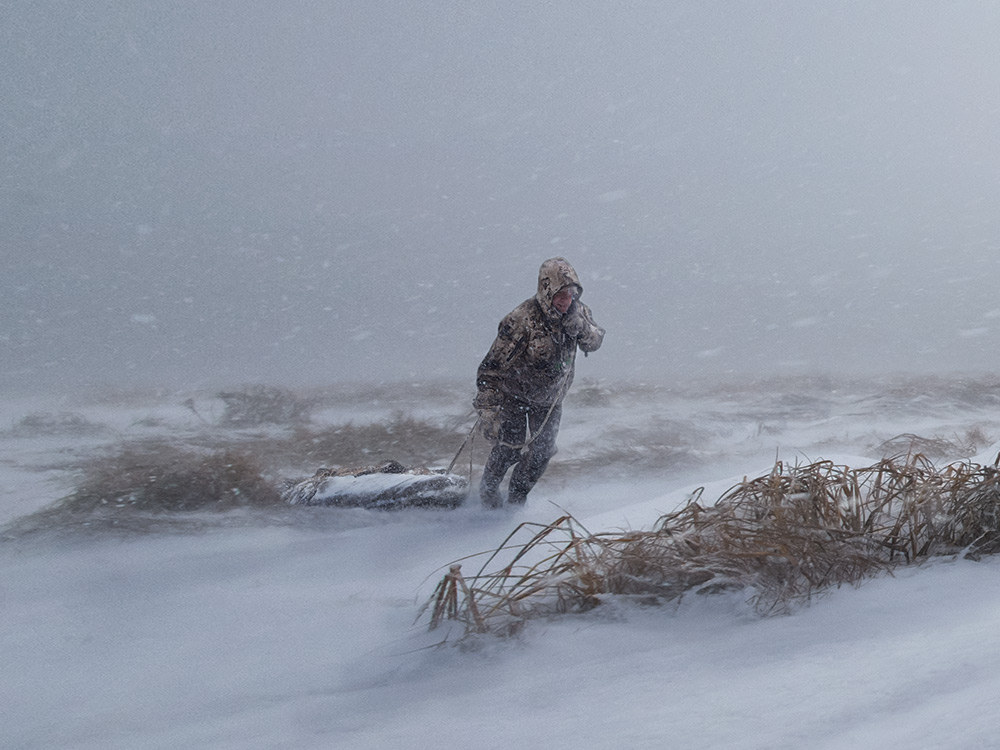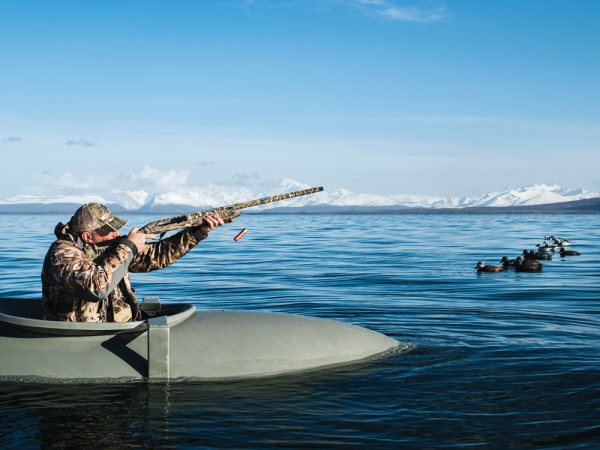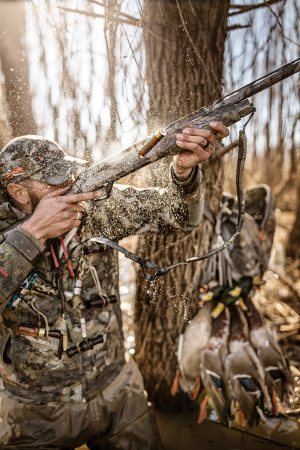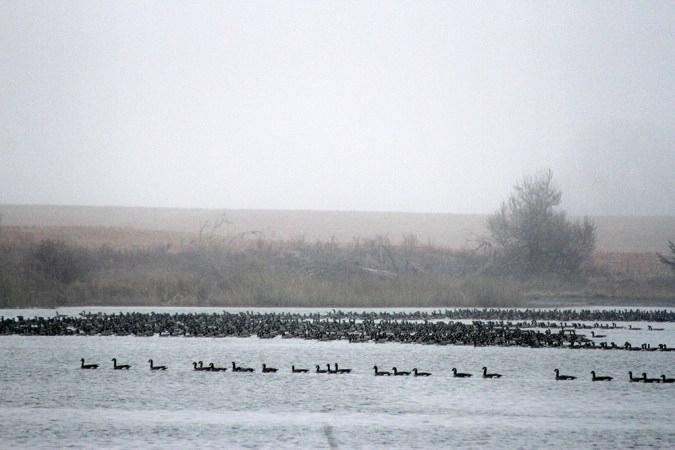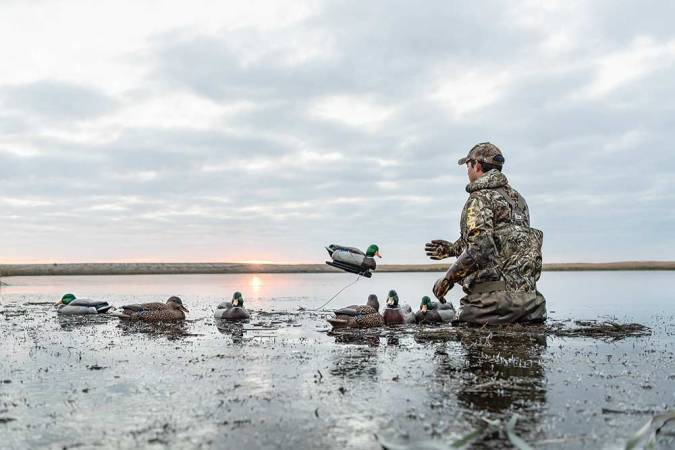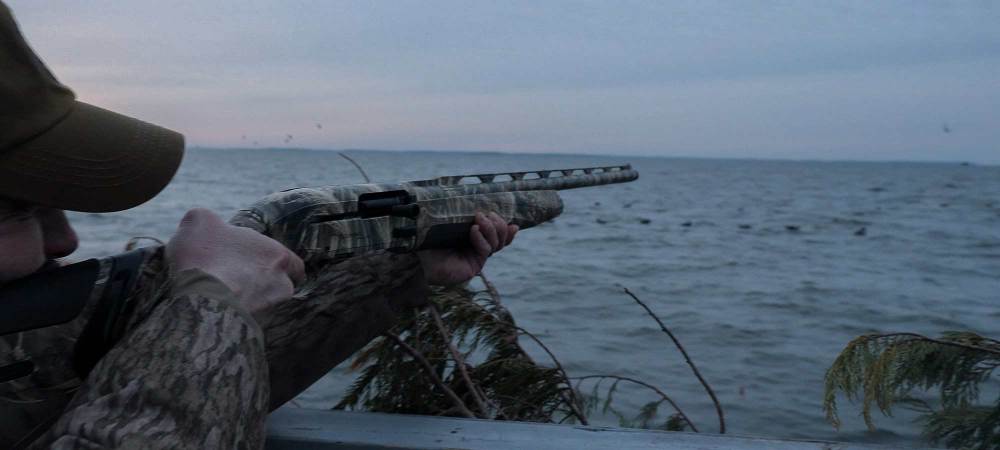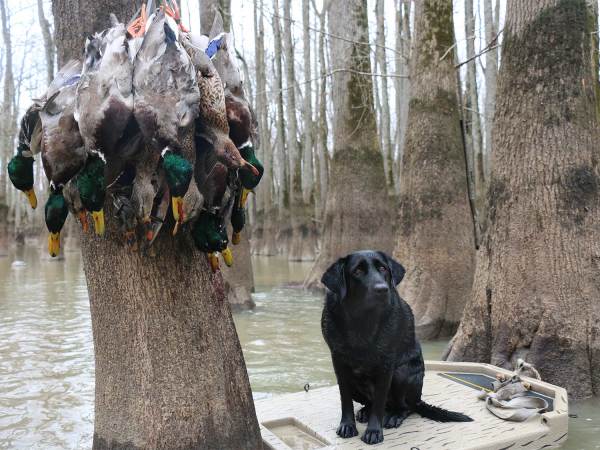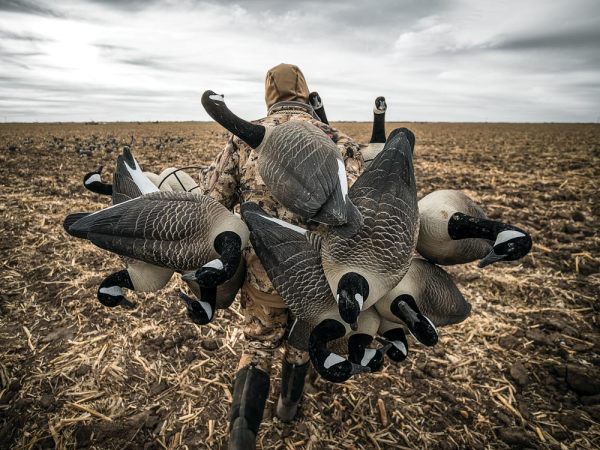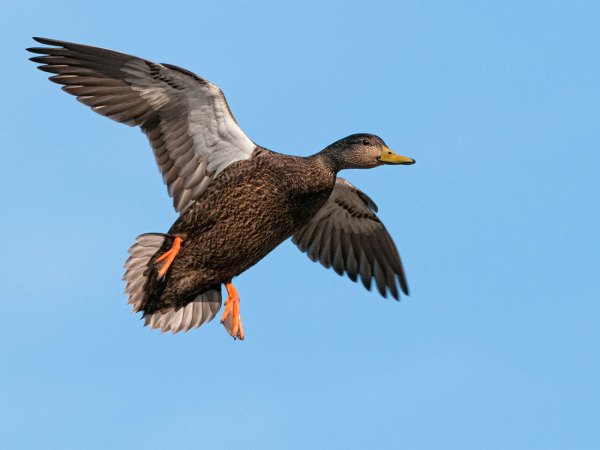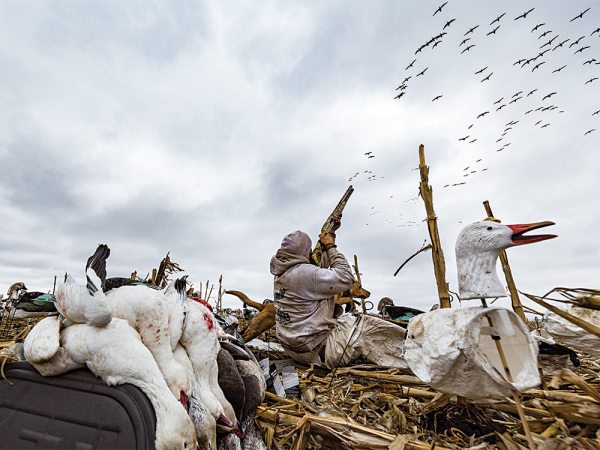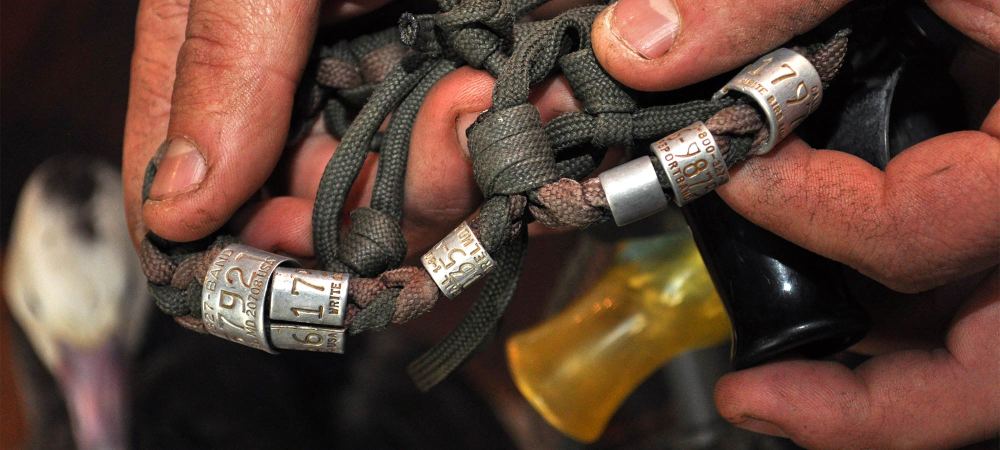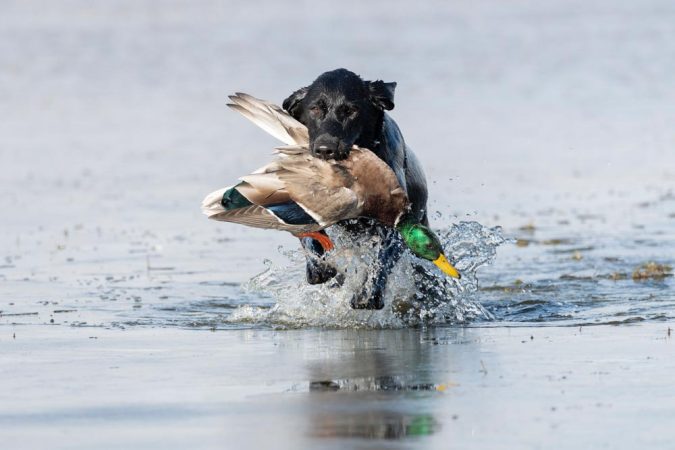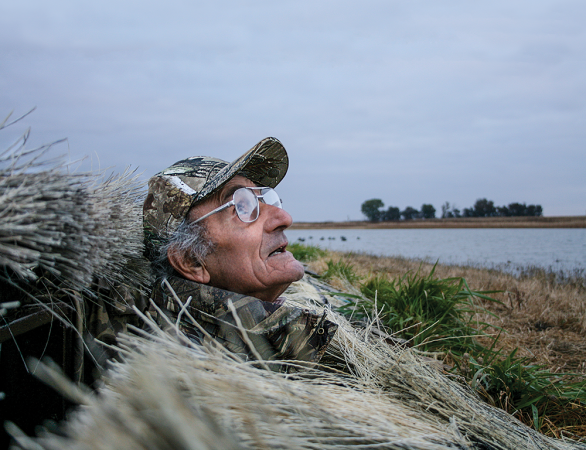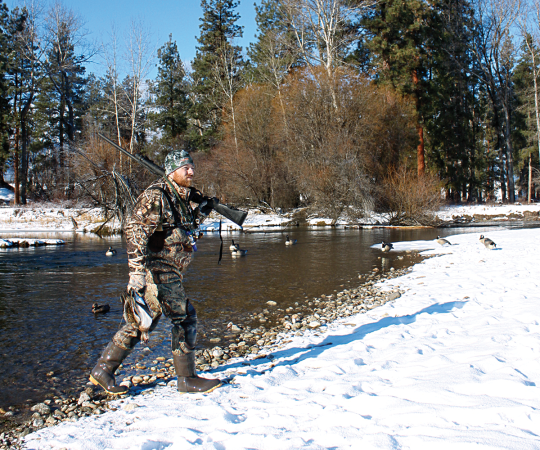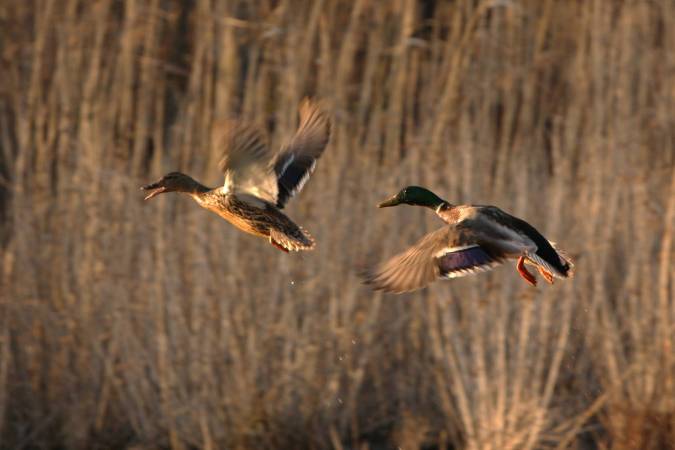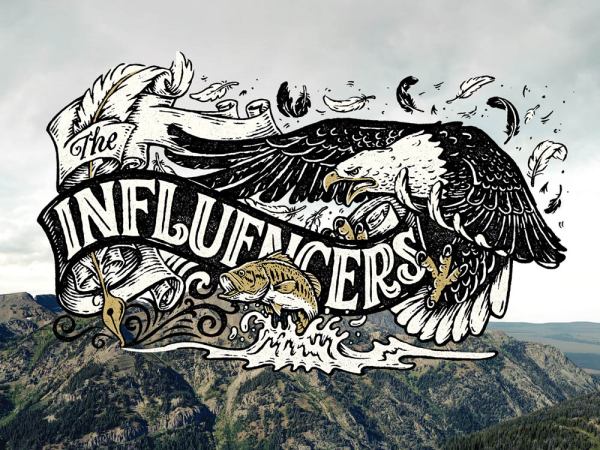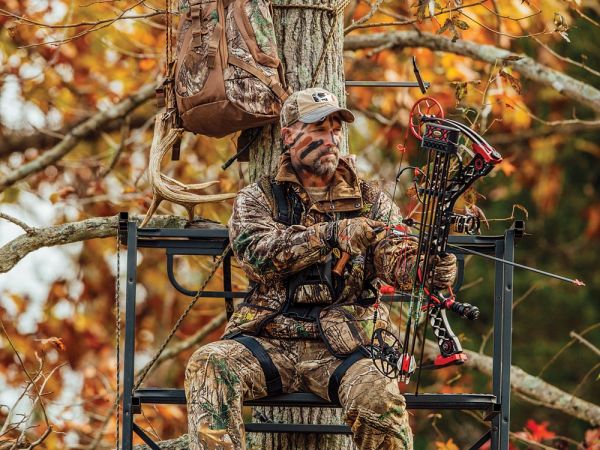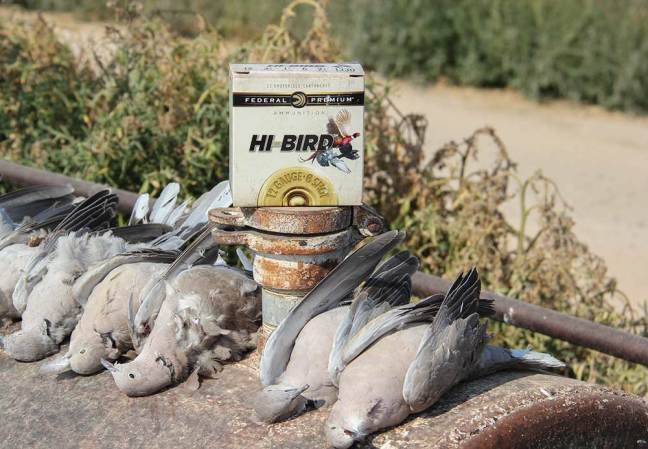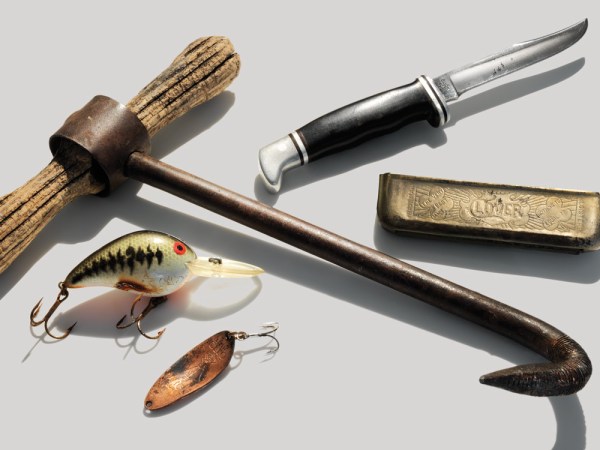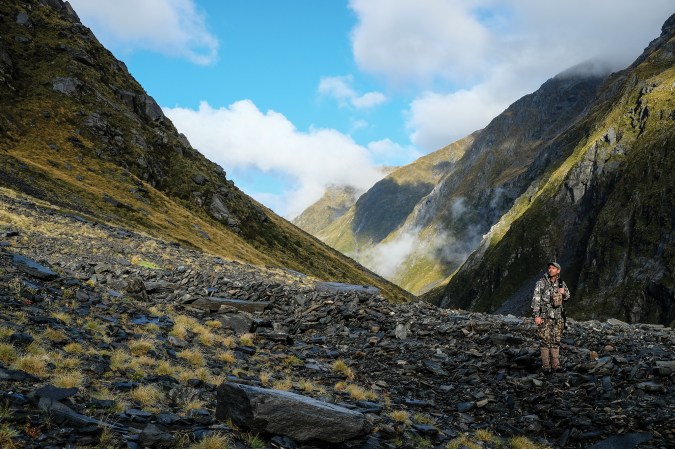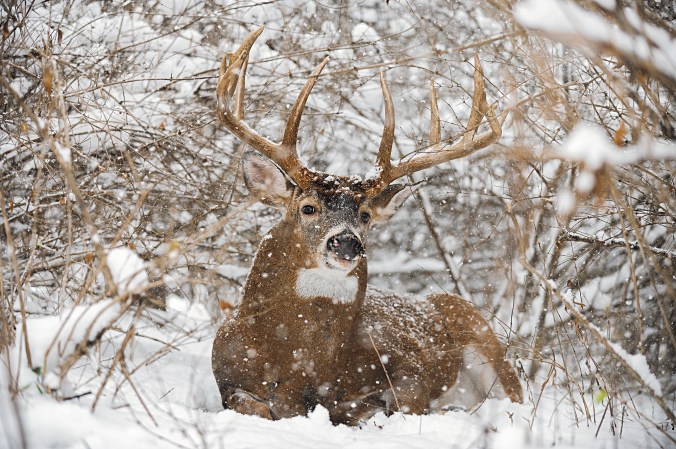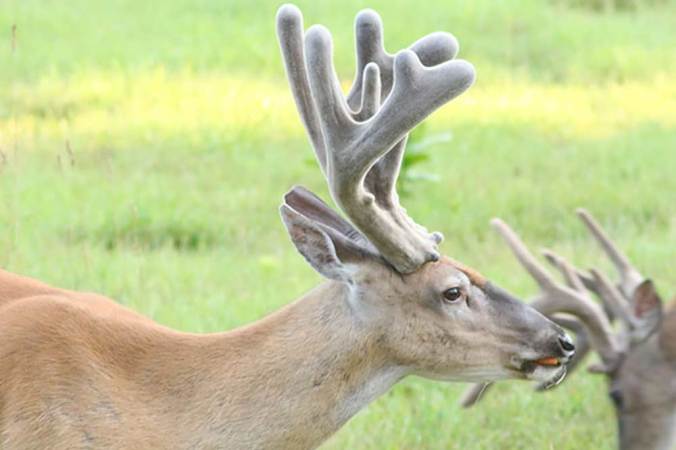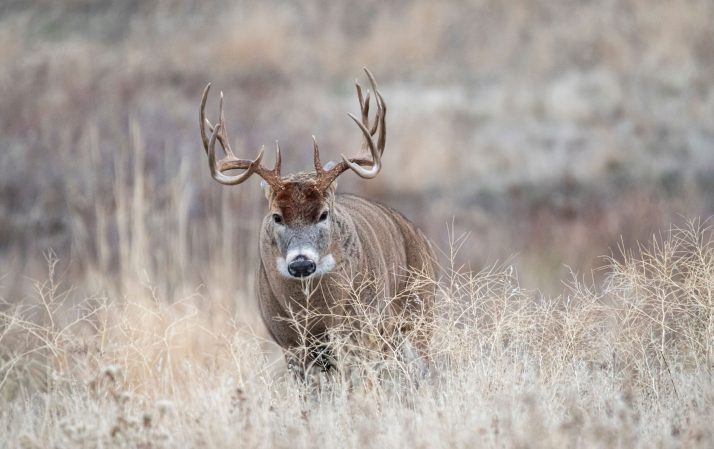As the sun set, the snow flew—first in flurries, followed by blinding sheets of white. My 4Runner—in 4WD low—struggled to climb Wurtsboro mountain on Route 17 in New York’s Catskills, visibility through the iced-up windshield teetering between low-beam blur and nonexistent. An inch per hour or 2 inches per hour—local radio stations could not confirm. The general firearms season in the state’s most heavily hunted deer unit had just ended, and opening day of the mid-December muzzleloader season would arrive at dawn. I had to get to camp. Although five of us were scheduled to hunt, only my buddy Ralph Stuart and I made it to camp in what was a bona fide ice storm. Temperatures were in the teens, winds reached 50 mph, and the sleet just kept on falling. Our woodstove never succeeded in warming up the cabin that night, and though dawn broke with clear skies, the limb-cracking winds never subsided. “Let’s go,” Stuart said shortly after sunup. “We need to do it, for no other reason than to say that we did it. This is deer-killing weather. We are the Ice Men.”
I, frankly, thought that he had lost his mind. Although the ice and snow had quit at 15 inches, the wind had not. Through the windows at camp, I could see tree branches crashing in every direction. Nevertheless, Stuart headed west and I headed east on what was to be the most memorable deer hunt either of us has ever had. After several muzzleloader misfires, Stuart filled his tag by noon. I, too, had several malfunctions and then filled my tag at four in the afternoon.
Wisconsin waterfowl guide Jeremy Dersham and New York deer hunter Joe DeNitto have earned the title of Ice Men, too, being hunters who don’t just endure harsh late-season conditions, but intentionally seek out the cold, the snow, the ice, and the wind. Why? Because they are confident that the worst of times weather-wise can be the best of times to hunt.
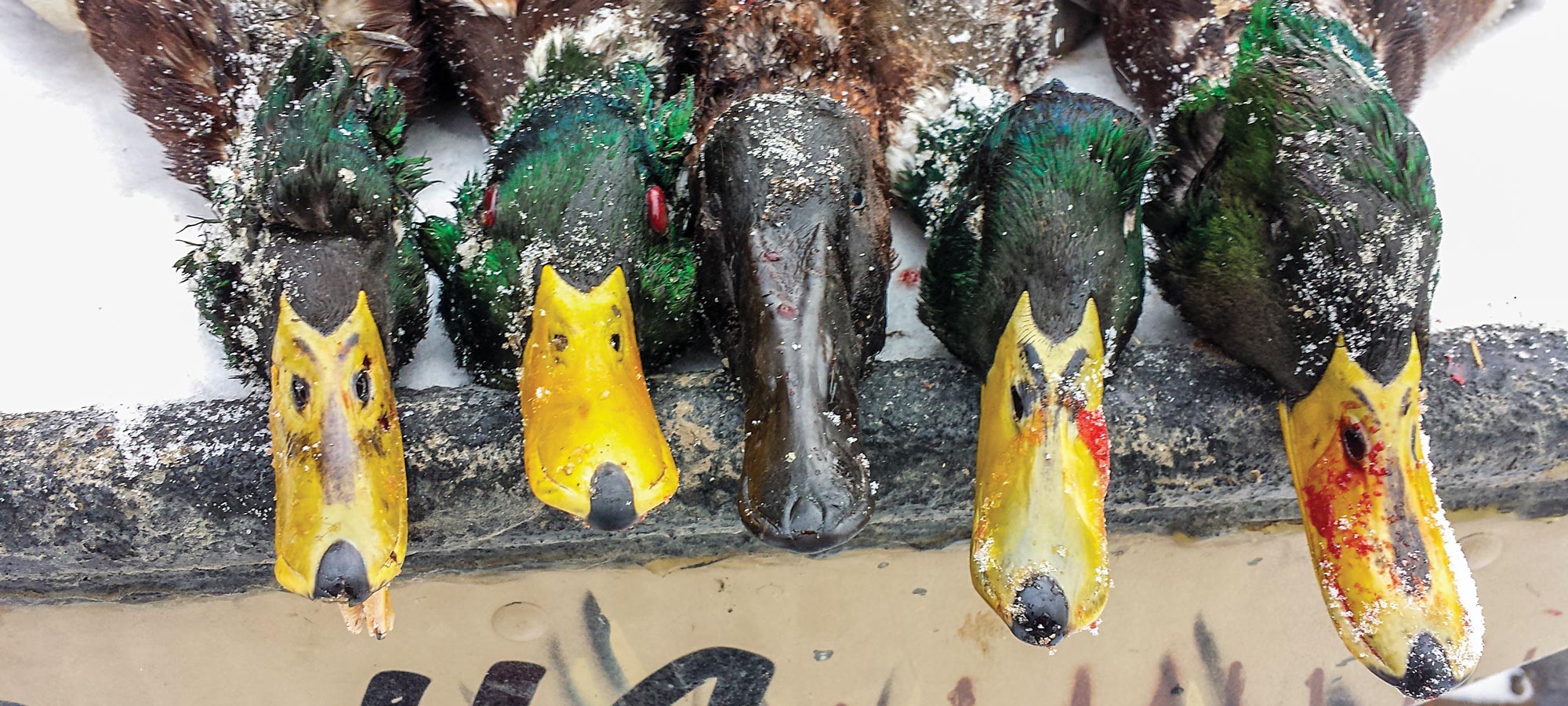
Jeremy Dersham | Breaking the Ice
Reedsburg, Wis., waterfowl guide Jeremy Dersham is reminded of the risks and rewards of late-season duck hunting each morning that he backs down the boat ramp in Ferryville, Wis., on the Mississippi River’s famed Pool 9. There, a plaque memorializing the waterfowlers who died in the calamitous Armistice Day storm of 1940 serves as a constant reminder of what can happen on the big water.
“It was, for all practical purposes, a hurricane,” wrote Chris Madson in “The Day the Duck Hunters Died,” in the February 1984 issue of Outdoor Life. “The barometric pressure at La Crosse, Wisconsin, dropped to 28.73 inches. When the wind struck La Crosse at 3 p.m., the mercury stood at 54 degrees. About 16 hours later, it hovered at nine. It was the kind of shooting that makes a duck hunter forget the cut of the wind. All along the upper Mississippi, waterfowlers reveled in it—for a while. By the time they appreciated the real ferocity of the storm, many of them were committed to staying where they were. There were many places on the river where no human being could survive. A few hunters found themselves in such places.”
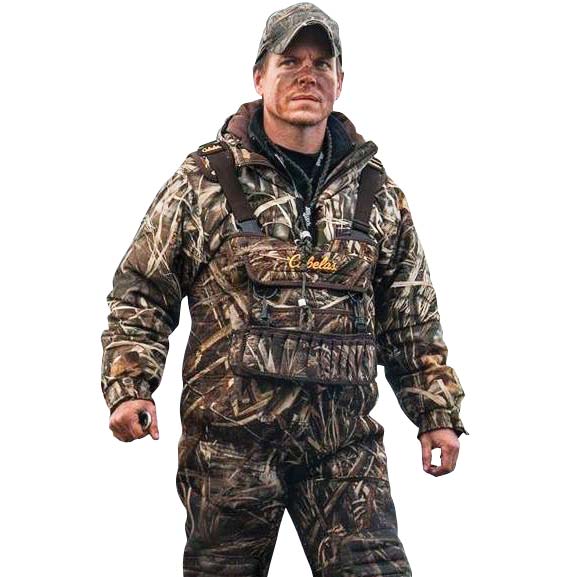
“Mother Nature caught hundreds of duck hunters on the Armistice Day holiday,” wrote Gordon MacQuarrie, then the outdoors editor of the Milwaukee Journal. “She promised ducks in the wind. The ducks came and men died. They died underneath upturned skiffs. They died sitting in skiffs. They died standing in river water to their hips. And they died trying to help each other.”
More than 85 duck hunters died in Wisconsin, Minnesota, and Illinois during the Armistice Day storm.
“There is no explaining the lure of such a day to someone who hasn’t experienced it,” wrote Madson. “There is the shooting, of course. But the main attraction is far deeper.”
“That plaque reminds you,” says 37-year-old Dersham. “I think about it a lot, and have read stories about it. I think about it more late in the season, when conditions are at their worst and we’re breaking ice all day to hunt ducks. Pool 9 isn’t necessarily deep, but it’s one of the widest points on the river—2.7 miles. It’s also one of the most dangerous spots on the river. The gear has changed since then, but the dangers are there. Duck hunters die here every year.”
The main attraction Madson referred to in his piece runs deep in Dersham, too. “When ice-up occurs, the bird activity can be astronomical—limits in a short period of time,” Dersham says. Plus, late-season mallards, goldeneyes, and canvasbacks are in their best plumage of the year—trophy birds. What’s even better for him, though, are the sights and sounds of late-season.
“There’s nothing quite like heading out and seeing icefishermen sitting on their buckets catching fish, or trappers walking around in the marsh checking their line,” says Dersham. “There are the bald eagles, and then there’s the creaking and cracking of the river making ice. It’s special—but there are details to keep in mind no matter where you’re hunting late-season waterfowl.”
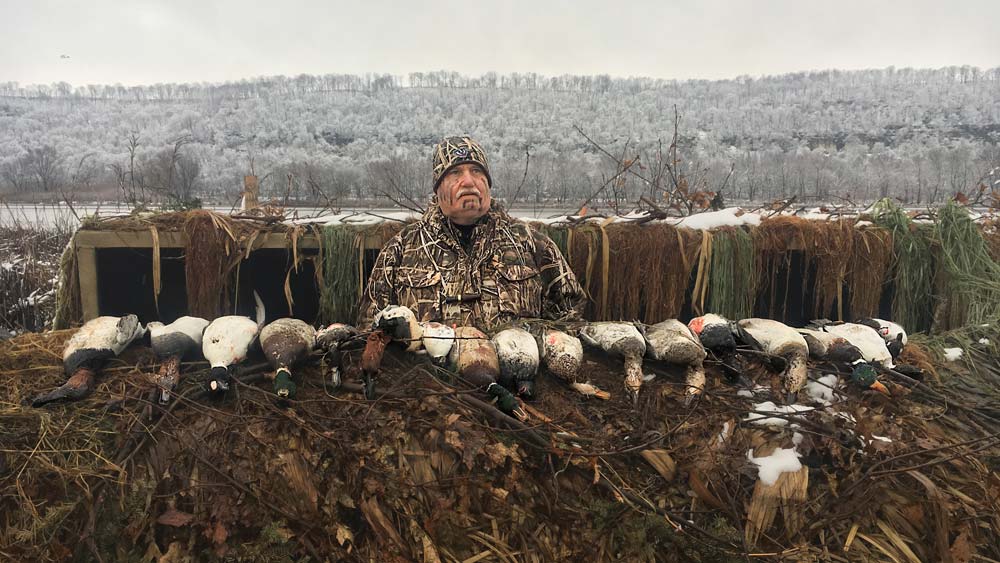
Read the Conditions
Paying close attention to the hourly forecast and the local conditions is paramount to Dersham’s late-season-hunting plan.
“Weather creates chaos, but what I’m ideally looking for is a 15 to 20 mph northwest wind with either sun or snow,” he says. “From where I set up, I want something to get into the birds’ eyes. I keep the sun to my back or side so that the birds can’t pick us out—anything to keep the shine off of the decoys. Snow is obviously better.
“The water and birds are going to tell you what to do,” he says. “If the water is making ice faster than you can break it, your hunt is going to be short. Pay close attention to the channels becoming lodged with ice and what your boat can go through safely. The same goes for ice already formed north of you and melting off when the temperature hits the 40s. Be prepared for ice to be moving down and what your course of action is going to be to get out safely.”
If the birds are not doing what you want them to do, make adjustments to your spread. When there is ice on the river, Dersham typically uses micro spreads of no more than two dozen decoys. He sets his full-body dekes on the ice shelf and up to six floaters in the open water. Late season is also the time for conservative calling.
“There’s no need to scream on a call,” says Dersham. “In these conditions, the birds want to get down. A few greeting calls and soft chuckles should do it. The birds will tell you.
“The importance of reading both the river and the birds during real-time moments and making adjustments accordingly will make for a safe and successful trip,” he says. “The river can change at a moment’s notice—pay close attention to what she’s telling you.” It was a lesson he learned the hard way three years ago.
Locked In
“That late season, the temperature never got above freezing for five days straight,” says Dersham. “The river was making ice constantly, and as I often have to do, I used an ax and a hatchet to break ice to get out. We went right at daybreak and set up off the main channel. Within an hour, the boat was frozen solid to the point. It was pretty steady shooting, and in two hours we had our limits.”
Concern set in quickly as Dersham set out to collect his decoys.
“I was an icicle,” he says. “It took me 45 minutes to break enough ice with my hatchet to get out of there, which is when I noticed that my buddy Darryl was not responding to me. His hands were freezing up and he was pale. And the ice was refreezing as fast as I was breaking it.”
The situation turned bleak when Dersham realized that the propane line to his heater had frozen solid, as had the discharge hose on his outboard. With temperatures in the teens and ice locking them in tighter by the moment, the pair were essentially trapped almost 2 miles from the boat ramp.
“That’s when I went for my big thermos of coffee,” says Dersham. “I poured it in the pee-hole discharge of the outboard and finally got it thawed enough to start the engine. It took a while, and I had to break some serious ice on the way back in, but we made it.”
By the time Dersham secured his duck boat to the trailer, the truck cab’s heater had kicked in enough to help Darryl regain both his wits and the feeling in his hands and feet. Driving past the Armistice Day memorial had never seemed more poignant.
Weather Beaters: How to Stay Warm When Waterfowling

Jeremy Dersham’s Ridge and River Running Outfitting (https://www.facebook.com/ridge-and-river-running-outfitters-139929086059914/) is one of only five commercial operations on Pool 9 of the upper Mississippi River. Late-season waterfowl hunts can bring some of the best waterfowl flights of the season, but the cold weather also comes with unique challenges. Here are three things Dersham says are essential for all late-season hunters.
Sand: Several hundred pounds of sand (and salt) stored in the pickup bed helps provide stability on snow-covered or icy roads, but even more important, on boat ramps. Check the ramp carefully before backing down, and sand when needed. Your duck boat may stop your slide into the lake or river, but not before you jackknife. The deck of the ramp closest to the water will be the iciest.
An ax, and a hatchet: Frozen water is the bane of every duck hunter’s existence. “If you hunt late in the season, chances are you’ll need to bust your way into or out of the water,” says Dersham. “I take along both a hatchet and long-handled ax.”
Thermos with hot liquid: Whether you use it to warm yourself or thaw the pee-hole on your outboard, hot liquids in large quantities are a must. They can save the day—or your life. Dersham brings along several large thermoses each day.
Joe Denitto | On the Track
With a harvest density of just one-half deer per square mile in some units, New York’s Adirondack Region may be the most difficult region of the country in which to hunt whitetails. There are few roads to drive and fewer trails to walk in the vast, forested mountains. And your chances of even seeing a deer, let alone a buck, are low. But that suits New York dairy farmer Joe DeNitto just fine.
“There’s no doubt in my mind that catching up to and shooting an Adirondack buck is harder than it is in Maine or northern Vermont and New Hampshire,” says DeNitto. “But when you get a killing day, there’s no other place I’d rather be. When the weather and the conditions are perfect—when the snow is right—I know I can be within 200 yards of a mature buck 8 out of 10 days. Heck, we own a 1,000-acre farm and I don’t even hunt it. I prefer the Adirondacks. It’s where you’ve got the ability to change your own situation. You don’t have to worry that the buck you’re after is already hanging in someone’s garage or has been hit by a car. And I’m not concentrating on a specific deer—I’m chasing snow.”
The 52-year-old’s record speaks for itself. From 1996 to 2008, DeNitto shot 12 bucks six years old or better. Seven of those were taken his first day on the track.
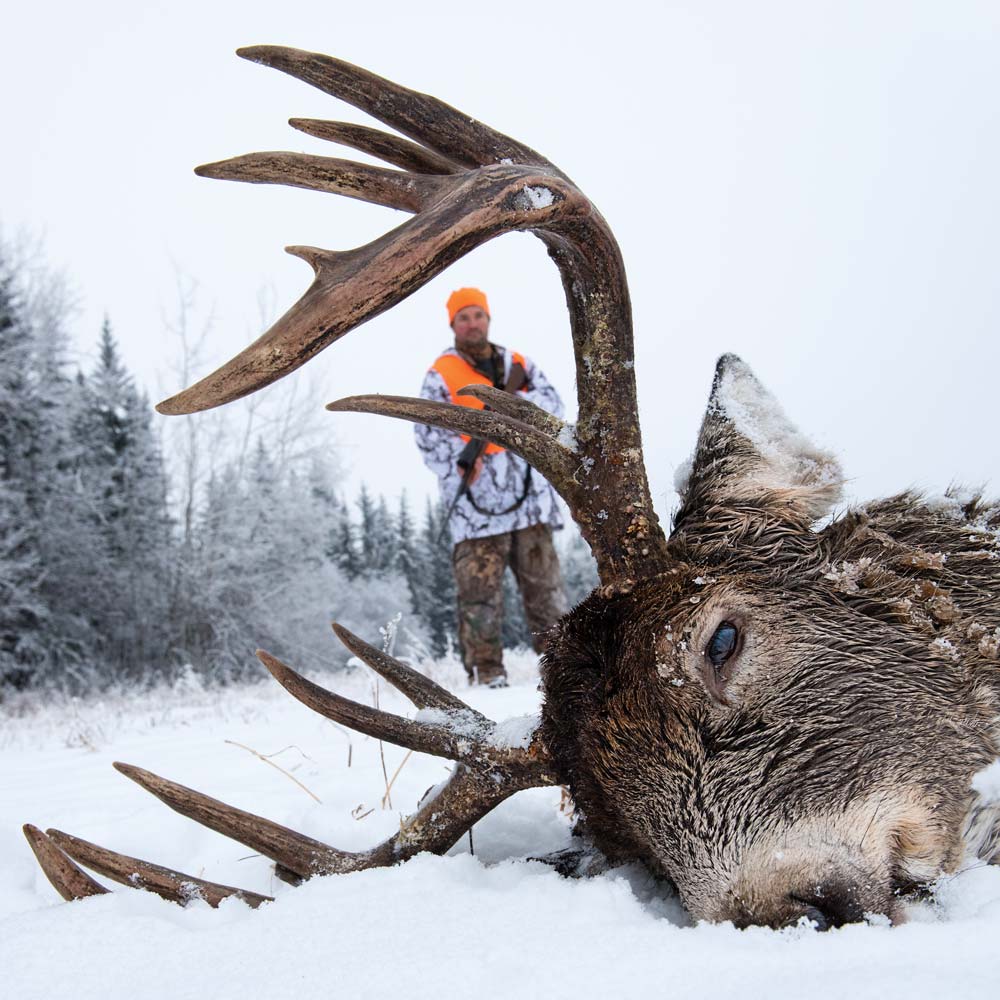
Killing Days
Among hunters in the upper Midwest and the Northeast, deer trackers are looked upon with reverence; their craft is considered to be almost mystical for its implausibility. For DeNitto, however, it’s all pretty simple—anyone can track a buck and everyone should try it.
“I’m not for a minute suggesting that anyone give up their bow or their treestand or their ground blind,” he says. “All I’m saying is that when the right weather hits and the snow flies, go out there and do it for a day.” Ideally, that day should fall late in the season. There should be 2 or 3 inches of snow on the ground that’s been refreshed by a couple of inches overnight.
“Some hunters think that blizzard conditions are perfect,” says DeNitto. “In a way that’s true, because the deer can’t smell you, have a hard time seeing you, and can’t hear you. But I don’t like it. When the snow is hanging on branches and trees and then dropping off or blowing around, it cuts your visibility a lot. Then if the tracks get covered up in snow too quickly, you can’t tell when they were made.”
The rut cycle is important, too. Bucks are only “catchable,” according to DeNitto, in either the pre-rut, when they have does on their mind but aren’t quite hell-bent on finding them, and late in the season, when they are trying to regain energy stores to survive the upcoming winter.
“During the rut, they’re just moving out and have a one-track mind,” he says. “I remember one time I picked up a rut track that was no more than an hour old, and by the end of the day, he’d gained an hour on me—he was just moving out trying to find a doe. That’s a tough deal.”
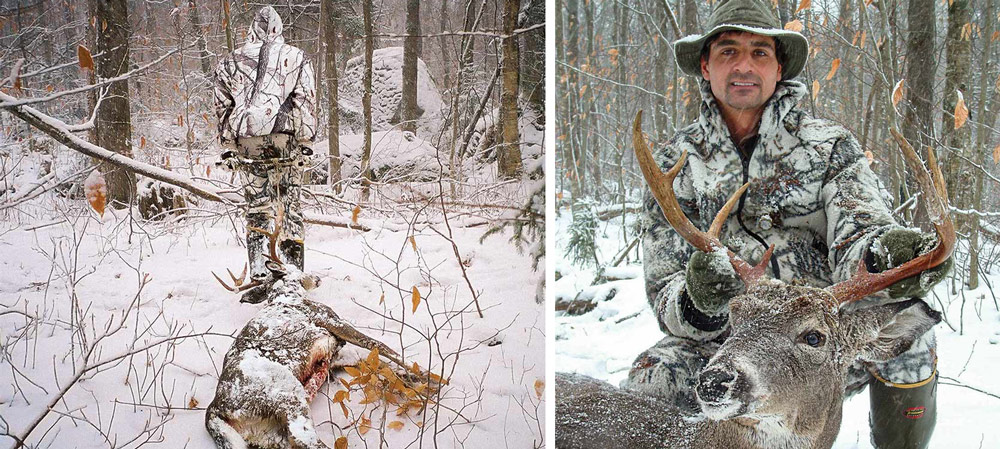
So how do you figure out precisely what a buck is going to do? DeNitto’s simple explanation erases tracking’s mystique.
“I like to put it into terms that are easy to understand,” he says. “Big bucks are like a guy coming home from work. He gets in his truck, jumps on the highway—maybe he follows some girls for a bit—but then he gets off the ramp. He may go right, he may go left, but he’s basically looking for a little something to eat. Well, that’s what a buck is doing late in the season.
“Then you get home. What’s the first thing you do? You head for the refrigerator for something to eat. That’s what a buck does, too. He may eat some buds, browse on some branch tips for a bit, or maybe take a bite of a mushroom. What do you do after you eat? You’re going to hit the couch or the bed. It’s completely predictable, and bucks are predictable in the same way.
“When I see him take a few bites to eat and then go either left or right, that’s the opening that I need. I become a moving treestand—take a step every few minutes and try to catch him off guard or in his bed.” When it comes to choosing the best scent elimination, best track size, or bearings in the big woods, DeNitto is equally pragmatic.
“All that is pretty simple, too,” he says. “I don’t worry about scent. When you’re on the track in the woods, that buck will take you in all sorts of directions. Ideally, you want the wind in your face, but it doesn’t always work out that way. When it comes to track size, if I don’t say, ‘Holy sh$%,’ when I see a track, I don’t follow it. In terms of getting lost? Well, I walk the ridges away from the truck until noon. If I’ve not found a track to follow, then I head right or left, basically in a big circle. I have a compass, a map, and a flashlight so that I can read the compass. Even if I’m dragging a buck behind me, I’ll get out.”
Weather Beaters: How to Stay Warm on the Track
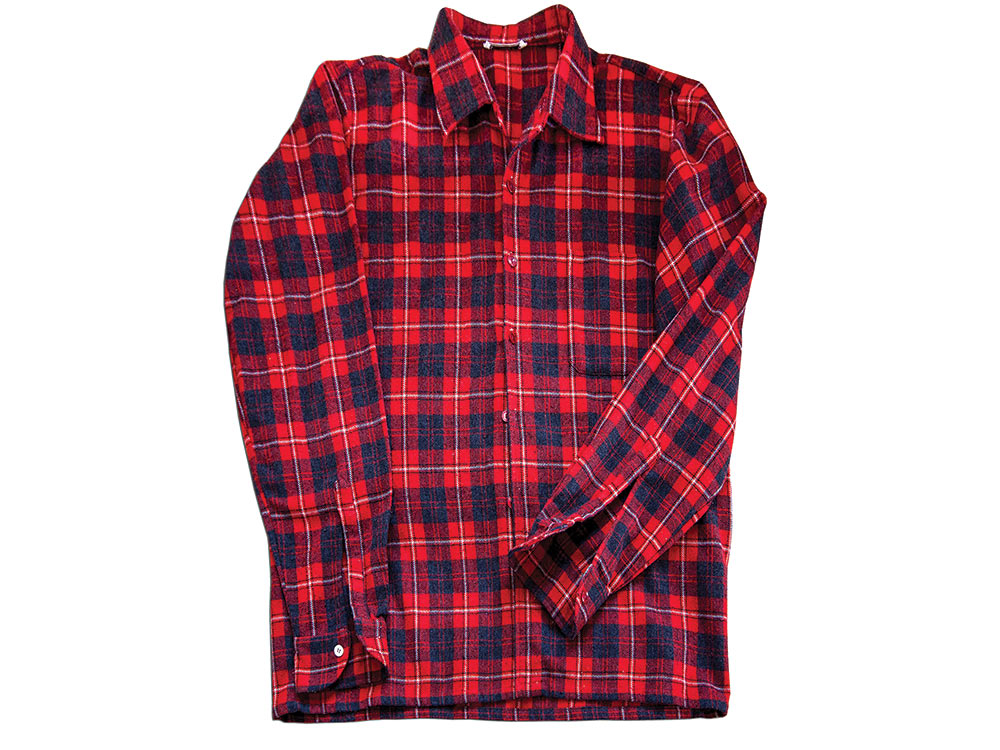
Deer trackers have long been known for packing light and taking along only essential gear. Here are three things Joe DeNitto is never caught without in the woods.
Tank-top undershirt: “I realize that with all the new underlayers on the market these days, this sounds weird,” says DeNitto. “But tank tops keep my arms and shoulders free, which is critically important for me. Since I’m moving all the time, I don’t get too cold either.”
Insulated flannel shirt: “These are great, but I wear them inside out,” says DeNitto. “It helps cut down on my sweat, but still keeps me warm when needed.”
Bobbed boot soles: “Air bob boot soles—various manufacturers refer to them differently—may be my most important must-have,” says DeNitto. “I’ve worn boots with different soles, but in mud, rain, snow, or ice, those soles cut down on slipping and sliding.”
